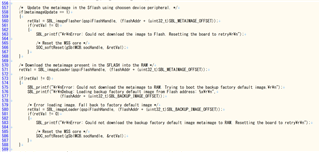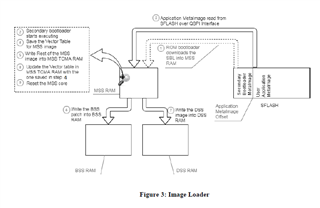Other Parts Discussed in Thread: MMWAVE-L-SDK
Tool/software:
We use secondary bootloader in order to update IWR6843's FW.
If the hardware including IWR6843 is power down when it receives FW data via XMODEM, IWR6843 doesn't bootup and output "Error: RPRC Parsing Failure!!!" message.
Detail procedure for reproducing is below.
1)Hardware power on.
2)Go to FW transfer mode on secondary bootloader
3)Send image to IWR6843 via XMODEM.
4)Before finishing transfer image, stop XMODEM.
5)Reboot IWR6843.
After this procedure, IWR6843 output "Error: RPRC Parsing Failure!!!" message.
We'd like to move to default backup image even if parsing updated image fail.
Could you provide us some solutions?
Best regards,
Masashi



